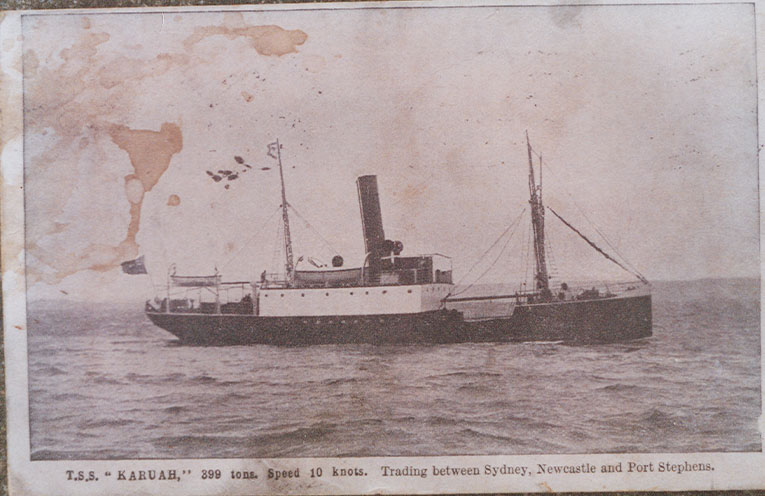FROM the very beginning shipping has been a hazardous means of transport.
Port Stephens with all the surrounding reefs and islands has experienced more than its share of wrecks.
Between 1800-1950 tragedy struck 110 ships between Broughton Island in the north, out to sea for about 100 kilometres, and south past Morna Point along the Stockton Beach as far as the area of Anna Bay.
This part of the NSW coast is often referred to as the ‘shipwreck coast’.
In the 150-year period covered, at least 110 persons died as a direct result of a shipwreck in the vicinity of Port Stephens. Animals on board ships also died.
An examination of the causes of the shipwrecks shows that stormy seas and negligence in navigation were the two main contributors.
A possible factor for the wreck of coastal trading ships was the practice of sailing close to the coastline to minimise the travel time between ports.
Captains could choose to travel further out to sea away from the shoreline and submerged rocks, but this increased sailing time.
They were often under pressure to complete trips in the shortest time and would choose to sail near the coastline, hopefully avoiding it and any submerged rocks.
In rough seas, or at night, ships could unknowingly travel too close to submerged rocks with disastrous consequences.
The reports of the wrecks reveal many acts of heroism by crew members in saving lives and of attending to injuries suffered by survivors.
Some survivors of ships that foundered south of Port Stephens at Morna Point and along Stockton Beach near Anna Bay, had to make the long and difficult walk along the beach back to Stockton to seek assistance.
Early steamships did not possess great horsepower when compared to modern motor vehicles which have an average of 180 horsepower.
The steam boilers mostly produced between 25 and 50 horsepower which was inadequate to enable captains to sail away from danger in stormy seas.
Port Stephens was a harbour of refuge.
During stormy seas, captains often sought shelter in the harbour.
As there were no navigation lights or the services of a harbour pilot in the early years, this was a problem for those captains not familiar with the area.
Sailing ships, in particular, had difficulties in entering or leaving Port Stephens in stormy weather and often ended up wrecked on the north head or nearby.
Twenty-four ships are recorded as being wrecked in that vicinity.
Captain Thomas Kehoe had the misfortune to wreck three ships at the north head.
Residents of Port Stephens and along the immediate coastline, together with the Point Stephens Lighthouse officers, performed many acts of kindness and gave practical assistance to shipwreck victims.
Many of these ended up in Nelson Bay or Anna Bay following their misadventure.
The wrecks along the Port Stephens coast and inside the harbour resulted in much ship wreckage being deposited on the ocean floor or along beaches.
Some portions of hulls and larger parts such as boilers remain on the sea floor and have become popular dive sites.
Similarly, wreckage is sometimes uncovered along the beaches after severe storms have removed sand. Unfortunately, many of the ships that were wrecked carried coal which was subsequently deposited on the sea floor particularly at the north head of Port Stephens.
By John ‘Stinker’ CLARKE




